Our Baltic Trip 2016, Part 9 - Grobiņa, Aizpute, Kuldīga and Talsi Posted on 28 May 22:46 , 0 comments
On our way out of Liepāja the next day, we drove through the remains of the big Soviet naval base on the north side of town. During the Cold War, the presence of this base made Liepāja a restricted town, with limited entry and exit even for residents. The city was in fact removed from maps, as a way to limit information about it. One of the more bizarre tourist activities on offer in Liepāja is the chance to spend a night in a cell at the base’s jail, as if you were a prisoner of the Soviets. You can even have guards come by and yell at you to wake up every hour or so. We passed on that opportunity!
On the outskirts of the base complex, we passed the cemetery associated with it. We were struck by the many flower arrangements left everywhere, a profusion of color brightening what might otherwise be a somber place. We saw the same sort of devotion to graves at other cemeteries we passed throughout Latvia. In fact, we found a gardening book at one of the many bookstores we visited in Latvia which was devoted to cemetery gardens.
Our first destination of the day was the town of Grobiņa, just inland from Liepāja. Grobiņa had been an important settlement in the eastern Baltic for the Vikings. It was accessible by sea for them, but now the river has silted and is no longer navigable.

View of river at Grobiņa from pilskalns
There are a number of Viking-related archaeological sites in the immediate area, enough, in fact, that it has been nominated as a UNESCO World Heritage Site. We visited the pilskalns, where we saw active excavations. From the hill, there was a view over the waterway and a small rope pulled ferry (raft).

River ferry at Grobiņa
The adjacent ruins of the Livonian Order castle were quite picturesque.
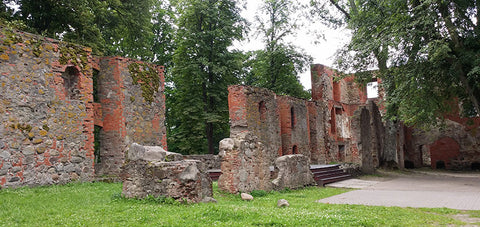

Castle ruins at Grobiņa
Ilga chatted with an elderly lady working in the nearby community garden, flush with flowers and vegetables. She told us about her son who lived in America, and how he kept urging her to come out to live with him. It was another chance to prove to Ilga that she still had proficiency in her first language.
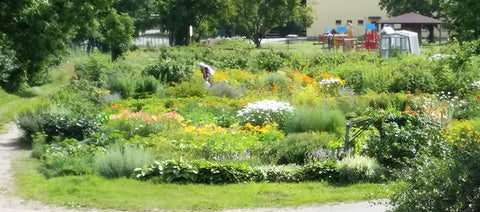
Community garden at Grobiņa
Moving, on, we passed through Aizpute, where we hoped to visit a weaving studio listed in the tourist information, but it was Sunday, and the entire town was shut tight---not much happening in a Latvian provincial town on a Sunday. We did stop to look at the inevitable castle ruin overlooking the river. Although Aizpute is far inland, this river too had once been navigable by boats running in from the sea.
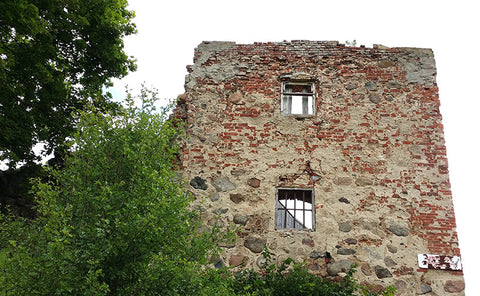
Castle ruins at Aizpute
Our main destination of the day was Kuldīga. This is considered one of the most beautiful, best preserved medieval towns in Latvia, with many buildings from the 13th to 18th centuries still standing.
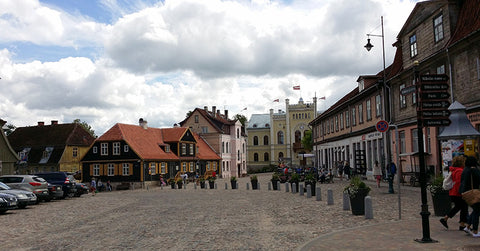
Kuldīga main square
It was first mentioned historically in 1242, when the Livonian knights requested permission to build a town on the river. The foundation stones of St. Catherine’s church were laid in 1252. We strolled around the castle hill. Alas, the castle itself was demolished and the stones used for other buildings long ago. The walkway through a park and gardens took us to the famous Venta waterfall. This lays claim to the title of Europe’s widest waterfall, although the river’s gentle flow and the falls height of only about 6 feet makes it unintimidating.
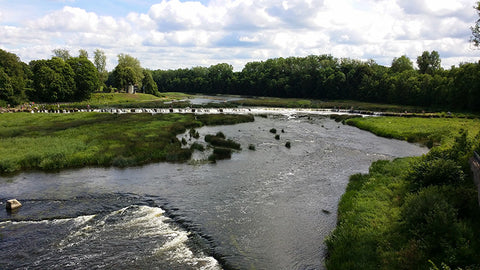
Waterfall at Kuldīga
There was a beautiful view of the waterfall from the picturesque bridge.

Bridge at Kuldīga
We strolled up Liepāja Street, the main pedestrian promenade and shopping street in the old town, enjoying the street scenes and the old buildings.
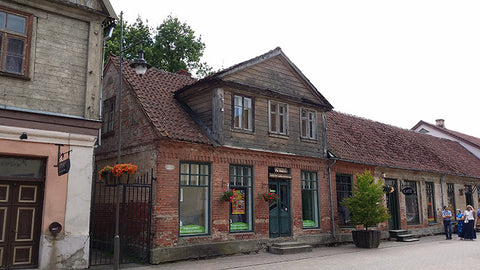
Street scene in Kuldīga
Doubling back on a parallel street, we encountered a lovely Orthodox church.
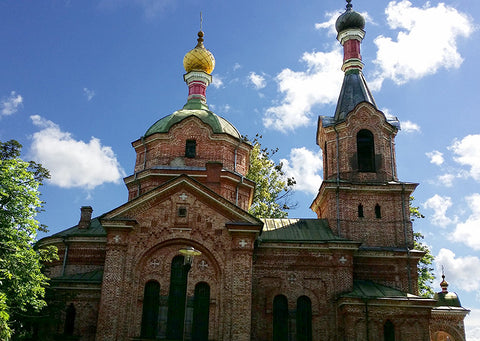
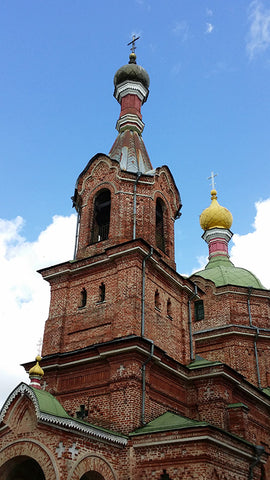
Orthodox church in Kuldīga
Just to the side, we found a sculpture garden filled with humorous wooden sculptures.

Garden of wooden sculptures
After sitting and feeding some pigeons, a little further on, we stumbled upon a Trojan Cat art piece place in front of the music academy, created by the artist Aigars Bikše.

A Trojan cat
Our final destination for the day was Talsi, where we were to spend the night at a guest house with the very un-Latvian name of Martinelli. Legend has it that a soldier by that name from Napoleon’s army stayed behind after the army’s retreat and made his home in the town.

Talsi
The lake in Talsi was, for a time, named for him. Our gracious hosts at the Martinelli Guest House operate a very fine traditional Latvian food restaurant (even better than Ilga’s Grandmother’s food!!! And that’s saying something) and a lovely small guest house, where we thoroughly enjoyed our stay. After dinner, Mike took a walk over the pilskalns and around the lake. In the morning, after one of the best breakfasts of our trip, our host took Ilga to visit a local weaving studio. This is part of an artist’s group that was established within the Tasli Regional Museum. The artists include painters, sculptures, photographers, textile and jewelry artists.
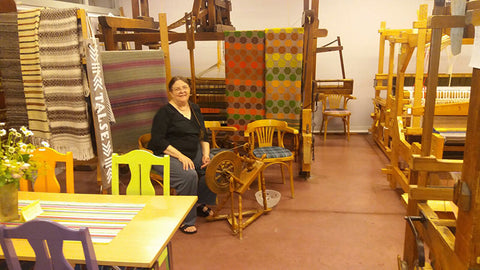
Fiber studio in Talsi

Big loom in the fiber studio
